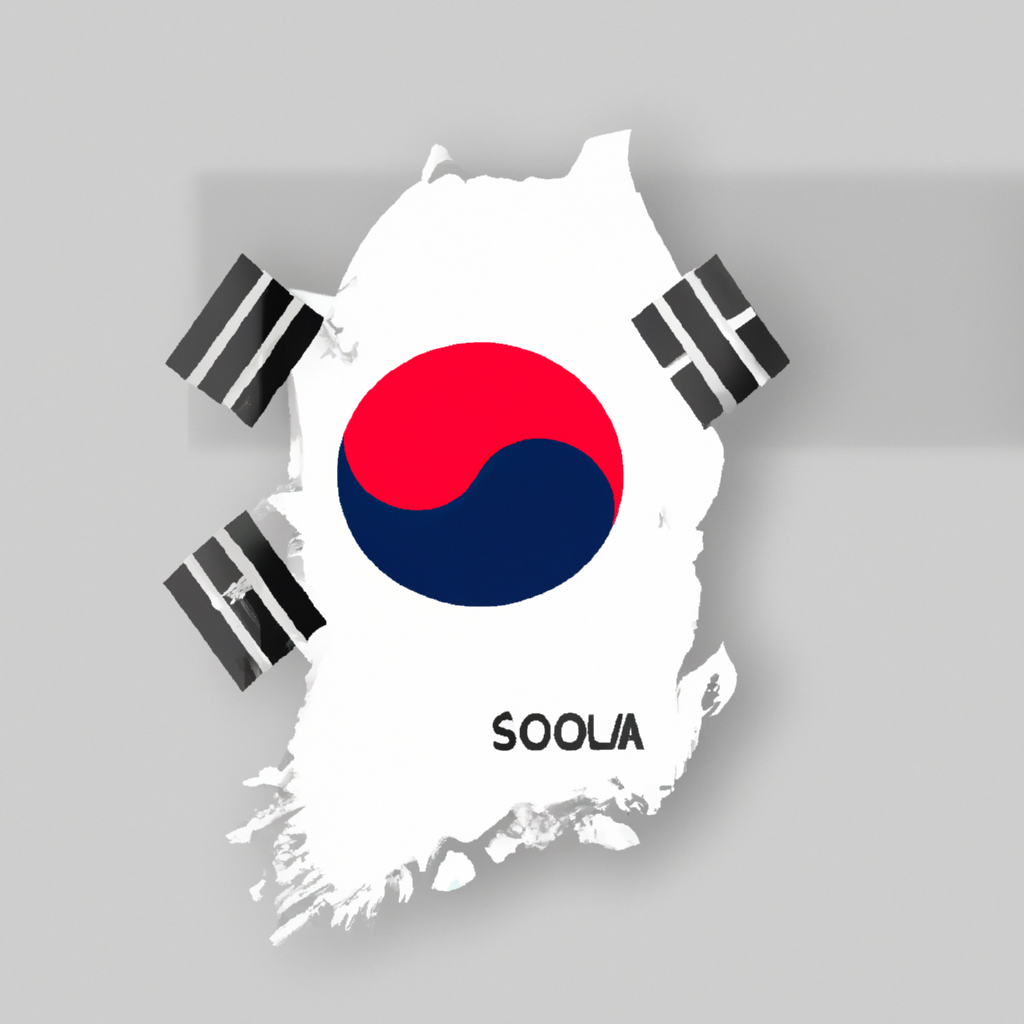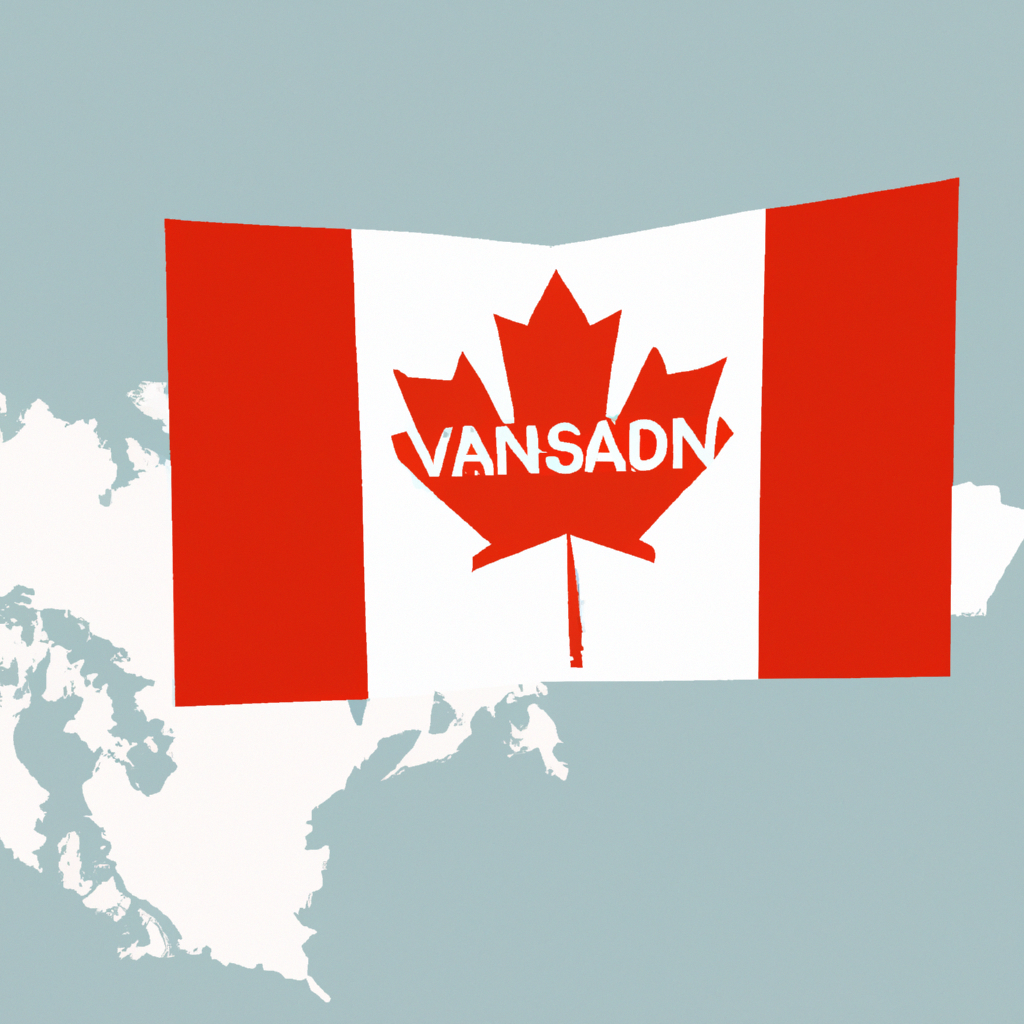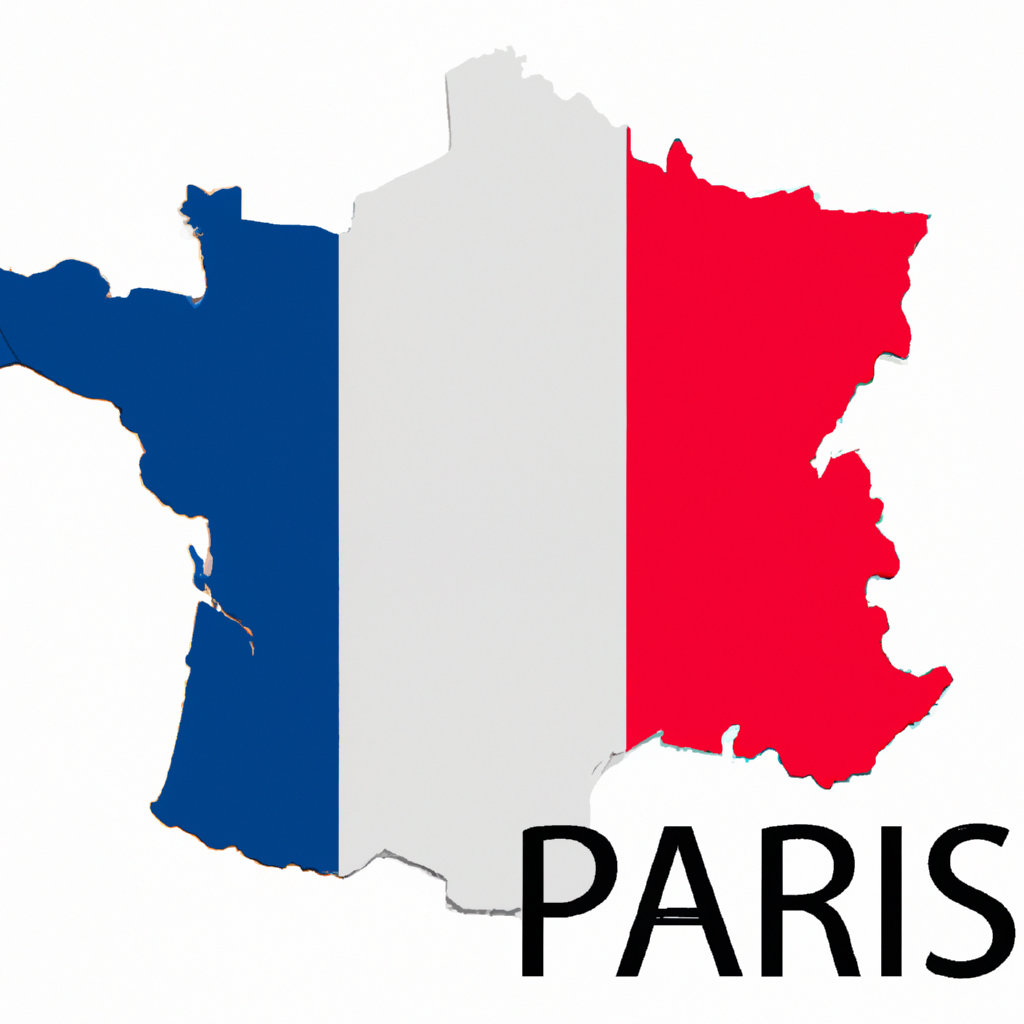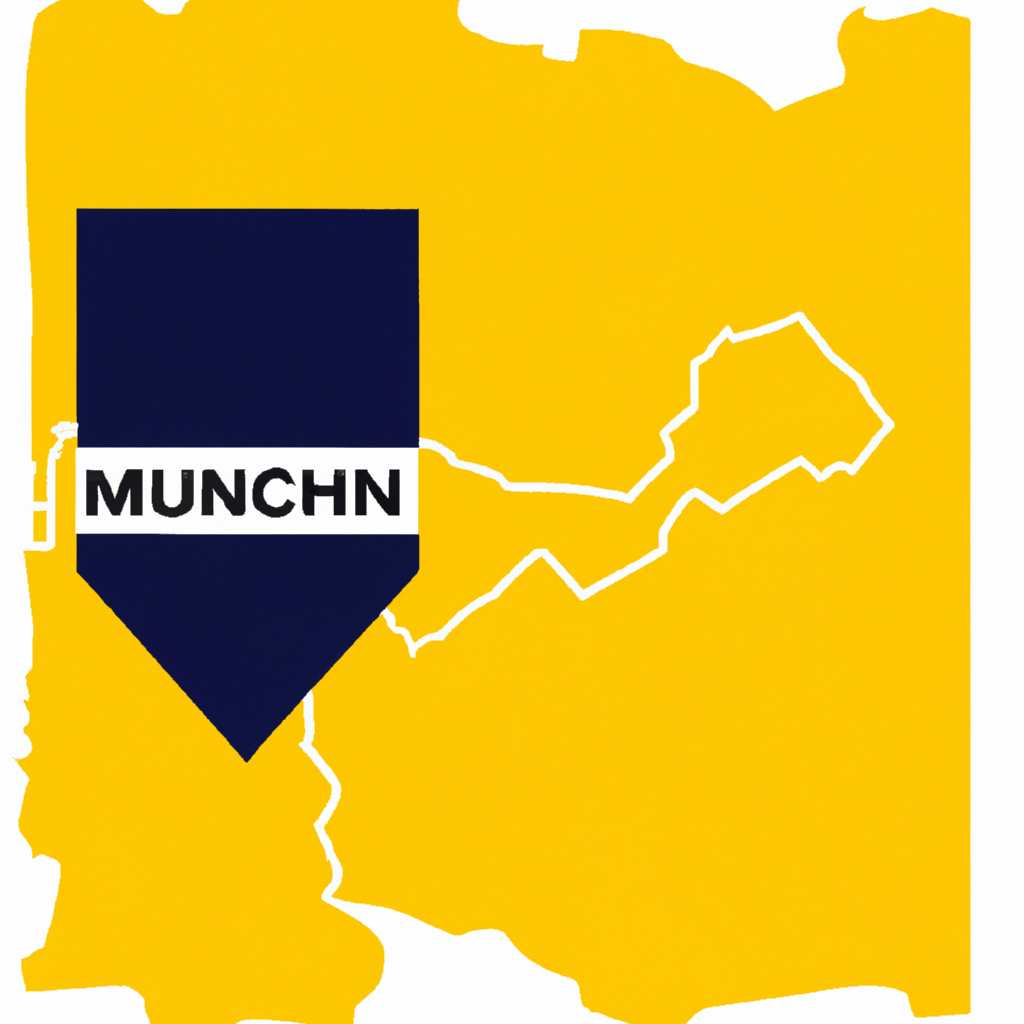Patagonia, Argentina/Chile: Interesting Facts,History, Things to do,Why to Visit
Post ByAdequate Travel
Patagonia is a breathtaking and expanding region that straddles both Argentina and Chile in South America. It has a fascinating culture and history, along with various things to do and attractions, which make it a great destination for travelers of all kinds. Whether you're looking for a place to hike, relax, explore, or just have an all-out adventure, Patagonia will not disappoint. In this post, we'll explore various interesting facts about the region, its history, various activities, and why visiting Patagonia is an absolute must.
Chile is a country located in South America, bordered by the Pacific Ocean to the west and the Andes Mountains to the east. It is known for its diverse landscapes, ranging from the Atacama Desert in the north to the fjords and glaciers of Patagonia in the south. Chile is also renowned for its rich cultural heritage, including the indigenous Mapuche people and its European influences. The country has a stable democracy and a strong economy, driven by industries such as mining, agriculture, tourism, and renewable energy. However, it also faces social challenges, including income inequality and ongoing protests demanding more equitable access to education, healthcare, and pensions.chile tourist attractions offer a diverse range of experiences for every traveler.
Interesting facts
Geography and Nature
Chile is a country with diverse and unique geographical characteristics. Stretching along the western edge of South America, it is one of the longest north-south countries in the world. Here are some interesting facts about Chile's geography and nature:
1. Longest North-South Country
Chile extends over 4,300 kilometers (2,670 miles) from north to south, but its width averages only about 177 kilometers (110 miles) from east to west.
2. The Atacama Desert
The northern part of Chile is home to the Atacama Desert, considered the driest desert in the world. Some areas of the desert have never recorded rainfall. It is also renowned for its unique geographical formations and stunning starry skies, attracting astronomers from around the world.
3. The Andes Mountains
Chile is situated along the western edge of the Andes mountain range, one of the world's longest mountain ranges. It is home to several active volcanoes, including Villarrica, Osorno, and Llaima. The Andes provide breathtaking landscapes, natural hot springs, hiking trails, and skiing opportunities.
History and Culture
Chile has a rich and vibrant history, shaped by various indigenous cultures, Spanish colonization, and its struggle for independence. Here are some interesting facts about Chile's history and culture:
1. Mapuche Indigenous Culture
The Mapuche people are one of the indigenous communities in Chile. They have a deep-rooted history and strong cultural traditions that have endured despite colonization. The Mapuche language, Mapudungun, is still spoken by many people today.
2. Pablo Neruda, Nobel Laureate
Pablo Neruda, one of the most celebrated poets of the 20th century, was born in Chile. He received the Nobel Prize in Literature in 1971 for his poetic works, which reflected his political and social beliefs. Neruda's former homes in Santiago and Valparaiso are now museums dedicated to his life and work.
3. Easter Island
Chile is also known for Easter Island, or Rapa Nui, located in the southeastern Pacific Ocean. This remote island is famous for its massive stone statues called moai, which were constructed by the Polynesian people who settled there centuries ago. The island's preservation of these statues and its unique Polynesian culture make it a UNESCO World Heritage site.
These are just a few examples of the many interesting facts about Chile's geography, nature, history, and culture. The country offers a wide range of attractions and experiences for both locals and visitors.From museums to parks,chile tourist attractions offer something for everyone, making it a versatile destination for all type of tourists.History of Chile
The history of Chile is rich and diverse, spanning thousands of years of indigenous civilizations, Spanish colonialism, wars of independence, and political upheaval. This South American country has faced numerous challenges and has undergone significant transformations throughout its history.
Indigenous Civilizations
Before the arrival of the Spanish conquistadors in the 16th century, Chile was inhabited by several indigenous groups such as the Mapuche, Aymara, and Diaguita. These civilizations had well-established societies and economies, relying on agriculture, fishing, and trade. They had developed advanced farming techniques, intricate artistic expressions, and complex political structures.
Spanish Colonialism
In 1535, the Spanish arrived in Chile led by Diego de Almagro. They established the first Spanish settlement in Santiago in 1541 and initiated a process of colonization known as the Captaincy General of Chile. The Spanish imposed their language, religion, and culture, while also introducing new crops and animals to the region. The indigenous population was subjected to forced labor and exploitation, resulting in resistance movements, such as the Mapuche resistance, which lasted for centuries.
Wars of Independence
In the early 19th century, Chile, along with other Spanish colonies in Latin America, sought independence from Spanish rule. The process of independence was marked by a series of wars and political struggles. Notable figures such as Bernardo O'Higgins and José de San Martín played crucial roles in the fight for independence. Chile finally declared its independence from Spain on February 12, 1818, establishing itself as a republic.
Political Upheaval
Since achieving independence, Chile has experienced periods of political instability, dictatorships, and social movements. The 20th century saw the rise of political ideologies, including socialism, communism, and authoritarianism. Salvador Allende became the first democratically elected Marxist president in 1970 but was overthrown in a military coup led by General Augusto Pinochet in 1973. Pinochet's regime lasted until 1990 and was marked by human rights abuses and economic reforms.
Transition to Democracy
Chile transitioned to a democratic government in 1990 after a national referendum. Since then, the country has enjoyed relative political stability and economic growth. Chile has focused on strengthening democracy, enhancing social welfare, and promoting economic development. However, it still faces challenges such as wealth inequality, social unrest, and indigenous rights.
Examples of key events in Chile's history include:
1. The Arauco War (1536-1825) between Spaniards and the Mapuche people.2. The Battle of Chacabuco (1817), where the Chilean and Argentine armies defeated the Spanish forces.3. The military coup led by General Augusto Pinochet in 1973, overthrowing President Salvador Allende.4. The plebiscite held in 1988, which marked the beginning of the end of Pinochet's dictatorship.5. The election of Michelle Bachelet as Chile's first female president in 2006.Exploring the rich heritage of historical sites in chile is a journey through time and culture.Famous Things of Chile
1. Easter Island
Easter Island is a remote volcanic island in Polynesia. It is famous for its monumental statues, known as Moai, which were created by the early Rapa Nui people. These giant stone figures, weighing up to 75 tons, stand along the island's coastline and have become iconic representations of Chilean culture.
2. Torres del Paine National Park
Torres del Paine National Park is located in the Patagonia region of Chile. It is renowned for its stunning landscapes, encompassing rugged mountains, glaciers, lakes, and rivers. The park offers numerous hiking trails, including the famous "W Trek," which takes visitors through breathtaking scenery and offers amazing views of the iconic granite towers that give the park its name.
3. Valparaiso
Valparaiso is a vibrant port city on Chile's Pacific coast. It is known for its colorful hillside houses, which create a stunning and unique cityscape. The city is also famous for its street art, with numerous murals decorating its walls, alleys, and stairways. Valparaiso's rich cultural heritage and bohemian atmosphere attract artists, writers, and musicians from around the world.
4. Atacama Desert
The Atacama Desert, located in northern Chile, is considered one of the driest places on Earth. Its surreal landscapes, featuring salt flats, geysers, and colorful lagoons, have made it a popular destination for nature enthusiasts and photographers. The desert's clear skies and high altitude also make it an excellent spot for stargazing, with several astronomical observatories based in the region.
5. Chilean Wine
Chile has gained international recognition for its wine production. The country's diverse climate and geography allow for the cultivation of a wide variety of grapes, resulting in high-quality wines. The Central Valley, Maipo Valley, and Colchagua Valley are renowned wine regions that offer vineyard tours and wine tastings, allowing visitors to experience Chile's rich winemaking tradition firsthand.
Discover some unique facts about chile that will leave you amaze and intrigue.Culture of Chile
Chile's culture is a fascinating blend of indigenous traditions, European influences, and modern cosmopolitan elements. This South American country showcases a diverse range of cultural expressions through its music, literature, art, cuisine, and festivals.
1. Indigenous Roots
The indigenous peoples of Chile, such as the Mapuche, Aymara, and Rapa Nui, have played a significant role in shaping the country's culture. They have preserved their ancestral traditions and crafts, passed down through generations. The Mapuche, for example, are known for their vibrant textiles and intricate silverwork, while the Rapa Nui (Easter Island) people are famous for their monumental stone moai statues.
2. European Influences
Chile has a strong European influence, mainly from Spain and Germany. Spanish colonial architecture can be seen in cities like Santiago and Valparaiso, with colonial mansions and churches. German immigrants brought their traditions to the south of Chile, including beer brewing, Oktoberfest celebrations, and traditional Bavarian-style houses.
3. Literature and Arts
Chile has produced many prominent writers and poets. Nobel laureate Pablo Neruda is one of the most celebrated figures in Chilean literature, known for his romantic poetry. Isabel Allende, another notable author, is recognized for her magical realism novels. Chilean artists have also made significant contributions to the art world, with Roberto Matta and Violeta Parra being well-known examples.
4. Music and Dance
The music and dance of Chile reflect the country's cultural diversity. Traditional folk music, such as the Cueca, is performed during celebrations and festivals. The Cueca is a lively dance that often portrays courtship and love between partners. Chilean folk music instruments include the guitar, charango, and accordion. In addition to folk music, Chileans also enjoy genres like rock, pop, and cueca brava (a more urban and rebellious style).
5. Gastronomy
Chilean cuisine is characterized by its seafood, grilled meats, and flavors influenced by indigenous ingredients. Traditional dishes include empanadas (stuffed pastries), cazuela (a hearty stew), and curanto (a mix of meats, seafood, and vegetables cooked in a hole in the ground). Wine production is also significant in Chile, particularly in regions like the Maipo Valley and Colchagua Valley.
6. Festivals and Celebrations
Chileans love to celebrate and have numerous festivals throughout the year. One of the most important is Fiestas Patrias, which commemorates Chile's independence. During this festival, people indulge in traditional food and drink, perform cueca dances, and participate in rodeos. Another noteworthy celebration is La Tirana, a religious event where vibrant costumes and energetic dances pay homage to the Virgin of Mount Carmel.
Immerse yourself in the local culture by exploring chile's top-rated tourist attractions.Cuisine of Chile
The cuisine of Chile is known for its diverse flavors and ingredients influenced by indigenous Mapuche culture, Spanish traditions, and European immigrants. Here are some key aspects of Chilean cuisine:
1. Traditional Chilean Dishes
- Empanadas: These savory pastries are filled with various ingredients such as beef, cheese, onions, and olives.
- Asado: A typical Chilean barbecue that involves grilling different types of meat, including beef, pork, and chicken.
- Cazuela: A hearty stew made with meat, vegetables, and potatoes, often flavored with spices like cilantro.
2. Seafood
Given its long coastline, Chile has a vast array of seafood dishes. Some popular examples include:
- Ceviche: Fresh raw fish or seafood marinated in citrus juice, chili peppers, and onions.
- Caldillo de Congrio: A fish soup made with congrio, a local eel-like fish, along with shellfish and vegetables.
- Machas a la Parmesana: Razor clams baked with Parmesan cheese, butter, and breadcrumbs.
3. Corn-based Dishes
Corn is a staple in Chilean cuisine and is used to make various dishes, including:
- Pastel de Choclo: A casserole made with ground beef, onions, raisins, olives, and topped with a thick layer of sweet corn paste.
- Humitas: Similar to tamales, these steamed corn husks are filled with a mixture of ground corn, onion, and basil.
- Sopaipillas: Deep-fried dough made from corn flour often served with pebre, a traditional Chilean salsa.
4. Desserts
Chilean cuisine also offers a variety of sweet treats, such as:
- Leche Asada: A baked custard dessert made with milk, eggs, sugar, and flavored with vanilla and orange peel.
- Alfajores: Sandwich cookies filled with dulce de leche (caramel) and coated with powdered sugar.
- Tres Leches Cake: A sponge cake soaked in three different types of milk – evaporated milk, condensed milk, and heavy cream.
The diversity and richness of Chilean cuisine make it a delightful experience for both locals and visitors, offering a unique blend of flavors and cultural influences. From savory empanadas to seafood delicacies and sweet desserts, Chilean cuisine truly caters to a wide range of tastes.Exploring the city's diverse neighborhoods is one of the best ways to discover the best chile attractions, each with its own character and charm.Sightseeing
Chile offers breathtaking natural landscapes and vibrant cities worth exploring. Some must-visit sights include:
1. Torres del Paine National Park
Located in southern Chilean Patagonia, Torres del Paine is a world-renowned national park known for its stunning granite peaks, turquoise lakes, and vast hiking trails. It offers a range of activities like hiking, camping, wildlife spotting, and photography.
2. Easter Island
Easter Island, also known as Rapa Nui, is a remote island in the Pacific Ocean famous for its giant stone statues called Moai. Visitors can explore the unique culture, history, and archaeology of the island while enjoying its beautiful beaches and vibrant traditions.
3. Atacama Desert
Situated in northern Chile, the Atacama Desert is the driest non-polar desert in the world. It features mesmerizing landscapes, such as salt flats, geysers, colorful lagoons, and volcanic formations. Stargazing is also popular due to the clear skies and lack of light pollution.
4. Valparaiso
Valparaiso is a vibrant port city known for its colorful hillside homes, street art, and bohemian atmosphere. Visitors can wander through its winding streets, ride the funiculars to enjoy panoramic views, and appreciate the artistic and cultural heritage of the city.
Outdoor Activities
Chile's diverse geography offers numerous opportunities for outdoor enthusiasts. Here are some activities to consider:
1. Hiking
Chile has a wide range of hiking trails suitable for various skill levels. From the Torres del Paine Circuit to the Villarrica Volcano climb, hikers can experience breathtaking landscapes and challenge themselves in the wilderness.
2. Skiing
Chile's Andean region is home to several ski resorts, making it a great destination for winter sports enthusiasts. Skiing or snowboarding on the pristine slopes of resorts like Valle Nevado or Portillo can be a thrilling and memorable experience.
3. Watersports
Chile's extensive coastline offers exceptional opportunities for watersports like surfing, kayaking, and paddleboarding. Places like Pichilemu and Pucon are popular for surfing waves, while coastal fjords and lakes are perfect for kayaking adventures.
4. Fishing
Chile's pristine rivers, lakes, and coastline make it an ideal destination for fishing enthusiasts. Anglers can experience excellent fly fishing for trout, salmon, and other species in rivers like the Futaleufu or enjoy deep-sea fishing experiences in the Pacific Ocean.
Cultural Experiences
Chilean culture is a blend of indigenous, European, and modern influences, offering unique experiences for travelers. Here are some cultural activities to consider:
1. Wine Tasting
Chile is famous for its wine production, particularly its renowned wineries in the Central Valley region. Visitors can take wine tours, learn about wine-making processes, and indulge in tastings of world-class wines.
2. Traditional Cuisine
Trying traditional Chilean dishes is a must-do for food enthusiasts. Sample local specialties like empanadas, pastel de choclo (corn pie), or a typical seafood dish like Chilean seafood stew (Caldillo de Congrio).
3. Folklore and Festivals
Chile has a rich folklore tradition, and attending traditional festivals like La Tirana or the Fiesta de la Virgen de Andacollo allows visitors to witness vibrant dances, traditional music, and colorful costumes.
These are just a few examples of the many things one can do in Chile, a country that offers a wide range of activities to suit various interests and preferences. Whether you seek adventure, cultural immersion, or relaxation, Chile has something for everyone.When planning your trip to chile, be sure to include the best things to do in chile, which encompass a wide range of cultural experiences.Climate of Chile
The climate in Chile is diverse due to its elongated shape that stretches along the western edge of South America, covering a range of latitudes and geographical features. The country experiences a wide variety of climates, from arid deserts in the north to temperate rainforests in the south.
1. Atacama Desert (Arid Climate)
Located in the northern part of Chile, the Atacama Desert is one of the driest places on Earth. It is known for its extreme aridity, with some areas having never recorded any rainfall. The hot desert climate in this region is characterized by high temperatures during the day and significant temperature drops at night.
2. Mediterranean Climate
The central coastal region of Chile, including cities such as Santiago and Valparaíso, has a Mediterranean climate. This means mild, wet winters and long, dry summers. The temperatures in this region are relatively moderate, and rainfall occurs primarily during the cooler months.
3. Temperate Rainforests
The southern part of Chile, including the region of Patagonia, is home to temperate rainforests. This climate is characterized by cool summers and mild, wet winters. The region experiences high levels of precipitation throughout the year, with lush vegetation and diverse plant and animal life.
4. Alpine Climate
In the Andes Mountains of Chile, an alpine climate prevails at higher elevations. The temperatures in these areas are generally cold, and snowfall is common. The alpine climate is characterized by short summers and long, snowy winters, providing ideal conditions for skiing and other winter sports.
5. Polar Climate
Chilean Antarctica, located in the far south, experiences a polar climate. This means extremely cold temperatures, strong winds, and heavy snowfall throughout the year. The temperatures in this region rarely rise above freezing, making it a harsh environment with limited human habitation.
Overall, the climate of Chile showcases a wide range of climatic conditions, offering diverse landscapes and ecosystems. From the arid deserts in the north to the polar conditions in the south, Chile's unique geography provides a fascinating array of climates for visitors and inhabitants alike.Uncover the best chile attractions that will leave you awe-inspired and wanting more.Popular Activities in Chile
Chile offers a diverse range of activities that cater to different interests and preferences. Here are some of the popular activities you can enjoy in Chile:
1. Hiking in Torres del Paine
The Torres del Paine National Park is a paradise for outdoor enthusiasts and hikers. The park offers breathtaking landscapes, towering granite peaks, abundant wildlife, and stunning glaciers. Hiking the famous W Circuit or even attempting the challenging trek to the base of the Torres del Paine themselves is a bucket-list experience for many adventure seekers.
2. Wine Tasting in the Colchagua Valley
Chile is renowned for its world-class wines, and the Colchagua Valley is the country's premier wine region. Take a tour of the vineyards and wineries, learn about the wine-making process, and indulge in tastings and food pairings. You can sample exquisite varieties of Cabernet Sauvignon, Carménère, and Syrah, among others.
3. Exploring Easter Island
Easter Island, also known as Rapa Nui, is a remote and mysterious island located in the Pacific Ocean. This UNESCO World Heritage site is famous for its enormous stone statues called moai. Explore the history and culture of the island by visiting the archaeological sites, participating in traditional ceremonies, and enjoying the beautiful beaches.
4. Skiing in the Andes Mountains
The Andes Mountains provide a perfect setting for skiing and snowboarding enthusiasts. Chile boasts excellent ski resorts, such as Portillo, Valle Nevado, and El Colorado, where you can enjoy various winter sports. The ski season usually runs from June to September, attracting both locals and international visitors.
5. Discovering the Atacama Desert
The Atacama Desert is known as one of the driest places on Earth. However, it is also a land of stunning natural beauty and remarkable landscapes. Explore the salt flats of Salar de Atacama, witness geysers erupting in El Tatio, immerse yourself in the vibrant culture of San Pedro de Atacama, and stargaze at the crystal-clear skies.
These activities showcase the incredible diversity of experiences available in Chile and emphasize the country's natural and cultural treasures. Whether you are seeking adventure, relaxation, or cultural immersion, Chile has something to offer for everyone.Plan your trip with a list of the best things to do in chile, catering to all interests.Night Life in Chile
Chile offers a vibrant and lively night scene with a variety of entertainment and nightlife options for locals and visitors alike. From bustling bars and clubs to cultural performances and live music, Chile's cities have something for everyone to enjoy during the nighttime.
1. Santiago
Santiago, the capital city of Chile, boasts a thriving nightlife with numerous options for entertainment. The Bellavista neighborhood is known for its lively atmosphere and is considered the heart of Santiago's nightlife. It is home to a diverse range of bars and clubs, where visitors can enjoy drinks, dance, and socialize. Some popular venues include La Piojera, El Clan, and Casa Conejo.
2. Valparaíso
Valparaíso is another city in Chile known for its vibrant nightlife. The city's steep hills are dotted with bars and pubs, offering stunning views and a lively atmosphere. Calle Cumming and Calle Blanco are popular streets for bar-hopping, where visitors can enjoy a wide variety of drinks and live music.
3. Viña del Mar
Viña del Mar, a coastal city near Valparaíso, is also known for its nightlife, particularly during the summer season. The city hosts the annual Viña del Mar International Song Festival, a renowned music event attracting international artists and music lovers from around the world. Additionally, Viña del Mar offers numerous clubs, bars, and casinos that cater to different tastes and preferences.
4. Punta Arenas
Punta Arenas, located in southern Chile, offers a unique nightlife experience. The city has a lively pub scene where tourists and locals gather to socialize and enjoy traditional Chilean drinks. Pubs like La Cueva del Pirata and Shackleton Bar are well-known hotspots for a fun night out in Punta Arenas.
5. Cultural performances
Chile also provides various cultural performances and events that offer an alternative and enriching night-time experience. The Municipal Theatre in Santiago hosts ballet, opera, and theater performances throughout the year. Additionally, there are numerous jazz clubs and live music venues in Santiago where visitors can enjoy local and international artists.
In summary, Chile offers a diverse and exciting nightlife scene with options ranging from bustling city bars and clubs to cultural performances and live music venues. Whether it's enjoying a night out in Santiago's Bellavista neighborhood, exploring the vibrant streets of Valparaíso, attending the Viña del Mar International Song Festival, experiencing the unique pub scene in Punta Arenas, or immersing oneself in cultural performances, Chile has something to offer for everyone seeking a memorable nightlife experience.Step back in time as you visit the historical sites in chile, where the past comes alive.Visit Chile for its breathtaking natural beauty
Natural Landscapes
Chile is home to a diverse range of natural landscapes, making it a paradise for nature lovers. From the Atacama Desert in the north to the stunning Patagonia region in the south, the country offers a wide array of landscapes to explore.
Examples:
- Explore the otherworldly landscapes of the Atacama Desert, known for its geysers, salt flats, and stunning sunsets.
- Hike through the Torres del Paine National Park in Patagonia and witness breathtaking landscapes of towering mountains, glaciers, and turquoise lakes.
- Visit the mystical Easter Island and marvel at the impressive moai statues scattered across the island.
Vibrant Cities
Chile is also home to vibrant cities where you can experience the local culture, cuisine, and architectural wonders.
Examples:
- Visit the lively capital city of Santiago and explore its historic neighborhoods, bustling markets, and fantastic museums.
- Discover the colorful coastal city of Valparaiso, famous for its colorful houses, street art, and funiculars.
- Explore the charming city of Punta Arenas, located in the southern region, and enjoy its rich history, seafood delicacies, and stunning views of the Strait of Magellan.
Cultural Heritage
Chile has a rich cultural heritage, influenced by indigenous cultures, Spanish colonization, and immigrant communities. Visitors can explore the country's history and traditions through its museums, archaeological sites, and local festivals.
Examples:
- Visit the indigenous Mapuche communities in the Lake District and learn about their customs, cuisine, and traditional crafts.
- Explore the historic port city of Iquique and discover its well-preserved architecture from the era of saltpeter mining.
- Experience the vibrant culture of the Cueca dance during the Fiestas Patrias (Independence Day) celebrations in September.
Number of days required to visit Chile
When it comes to visiting Chile, the duration of your trip depends on various factors such as the places you want to visit, your travel preferences, and your budget. However, to get a comprehensive experience of Chile, it is recommended to spend at least 10-14 days in the country.
Factors influencing the duration of your visit:
1. Places to visit: Chile is a long and narrow country with diverse landscapes and attractions. If you plan to visit major highlights like Santiago, Valparaiso, the Atacama Desert, the Lake District, Torres del Paine National Park, and Easter Island, you will need more time to cover all these destinations.
2. Travel preferences: Some travelers prefer a relaxed pace, spending more time in each location to immerse themselves in the local culture and explore off-the-beaten-path areas. Others may opt for a faster pace, trying to cover more ground in a shorter time.
3. Budget: The length of your trip can also be influenced by your budget. If you have a limited budget, you may need to shorten your trip to fit within your financial constraints.
Example itineraries:
1. 10-day itinerary: This shorter trip would typically include a few days in Santiago, a visit to Valparaiso, a taste of the Atacama Desert, and exploring the central region's wine valleys. While it may not include all the must-see destinations, it allows for a good introduction to Chile's diverse landscapes and cultures.
2. 14-day itinerary: With a couple of extra days, you can add visits to the Lake District, Torres del Paine National Park, or a trip to Easter Island. This extended itinerary offers a more comprehensive exploration of Chile, including its natural wonders and remote destinations.
Remember, these example itineraries can be customized based on personal preferences, and additional time allows for more flexibility, spontaneous detours, and deeper exploration of the country.
Discover unique facts about chile, a destination filled with rich history and natural beauty.Significance of Chile
Chile, a long and narrow country in South America, holds great significance in various aspects. From its geographical features to its cultural heritage, Chile stands out for numerous reasons.
1. Geographical Importance:
Chile's unique geography has a significant impact on its climate and natural resources. The country is characterized by diverse landscapes ranging from the Atacama Desert, the driest place on Earth, to the Andes Mountains, which act as a natural barrier. The Pacific Ocean borders Chile to the west, fostering marine biodiversity and providing access to valuable fishing grounds. The country's geographic diversity has also allowed for the development of various ecosystems, making it a hotspot for nature lovers and researchers.
2. Economic Significance:
Chile's economic prosperity can be attributed to its rich mineral resources. It is the world's largest producer of copper and plays a crucial role in the global copper market. Additionally, Chile has a well-diversified economy, with significant contributions from agriculture, fisheries, forestry, and wine production. The country has also invested in renewable energy sources, such as wind and solar power, which have helped reduce dependence on non-renewable resources.
3. Cultural Heritage:
Chile boasts a vibrant cultural scene rooted in its indigenous heritage and Spanish colonial past. The country has preserved its traditional customs, arts, literature, and music, making it a hub for cultural expression. Chilean poets, such as Pablo Neruda and Gabriela Mistral, have received international recognition for their literary contributions. The Mapuche indigenous people, with their rich cultural traditions, continue to play a pivotal role in shaping Chile's identity.
4. Biodiversity:
Despite its narrow width, Chile possesses a remarkable variety of plant and animal species. The country's unique geography, spanning from the desert in the north to the temperate rainforests in the south, hosts diverse ecosystems. Notably, Chile is home to the ancient and rare Araucaria trees, as well as numerous species of flora and fauna found nowhere else in the world.
5. Tourism:
Chile's natural beauty, cultural heritage, and adventure opportunities make it an attractive destination for tourists. The country offers breathtaking landscapes, such as the Torres del Paine National Park and the Easter Island, where visitors can experience the majestic Moai statues. Chile's wine regions, including the renowned Maipo Valley, also draw wine enthusiasts from around the globe.
In summary, Chile's significance lies in its geographical diversity, economic prosperity, cultural heritage, biodiversity, and tourism potential. The country encompasses a wide range of landscapes, from deserts to mountains, fostering unique flora and fauna. Chile plays a vital role in the global economy, particularly due to its copper production and renewable energy initiatives. Its rich cultural heritage and vibrant arts scene make it a cultural hub in South America. Additionally, Chile's natural beauty attracts tourists from far and wide, eager to explore its stunning landscapes and cultural landmarks.From hidden gems to iconic landmarks, chile has something for every traveler's taste.What is the capital of Chile?
The capital of Chile is Santiago.
Example: The capital of Chile is Santiago. It is the cultural, political, and financial center of the country.
What is the official language of Chile?
The official language of Chile is Spanish.
Example: The official language of Chile is Spanish. It is spoken by the majority of the population and is the language used in government, education, and media.
What is the currency used in Chile?
The currency used in Chile is the Chilean Peso (CLP).
Example: The currency used in Chile is the Chilean Peso (CLP). It is denoted by the symbol "$" and is commonly used for transactions and payments within the country.
What are some popular tourist attractions in Chile?
Some popular tourist attractions in Chile include:
- Easter Island
- Torres del Paine National Park
- San Pedro de Atacama
- Valparaíso
Example: Some popular tourist attractions in Chile include Easter Island, famous for its mysterious Moai statues, Torres del Paine National Park, known for its stunning landscapes and hiking opportunities, San Pedro de Atacama, a desert region with unique geological formations, and Valparaíso, a colorful coastal city with vibrant street art.
What is the climate like in Chile?
Chile has a diverse climate due to its long, narrow shape and varying geography.
Example: Chile has a diverse climate due to its long, narrow shape and varying geography. In the north, the Atacama Desert is one of the driest places on Earth, while the central region has a Mediterranean climate with hot summers and mild winters. In the south, particularly in Patagonia, the climate is colder and more unpredictable with strong winds and rainfall.
chile tourist attractions offer a diverse range of experiences for every traveler.














